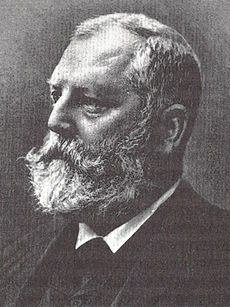By Kara
I'm currently in Cape Town, South Africa, and although I'm technically here on "business," I'm doing my best to nab some local cheese. Luckily, there's a swanky little grocery store just a block down the street, with plenty of specimens in stock. So far, it's a mixed bag: meet Caerphilly (a little gross) and Crottin (quite delish), my first tastes of South Africa. (Thanks to a trio of colleagues for their input on this post.)
 ENGLISH CAERPHILLY
ENGLISH CAERPHILLY
Background:Caerphilly (pronounced "care-FILL-y," although I can't help just saying "carefully") originated in Wales, although it is now widely produced throughout southern England. A "quick cheese," which matures rapidly to sell-ability, Caerphilly is also very high in salt. This was a successful combination in the 19th century, when farmers were looking for ways to sell off excess milk and sweaty miners were looking for ways to replenish their salt. The town of Caerphilly continues to celebrate its eponym with a three-day festival in July called "The Big Cheese."
Caerphilly is a hard white cheese, mild and salty in flavor. Originally, the cheese was creamy around the edges and more crumbly toward the center, but modern Caerphilly is pretty uniformly dry and crumbly. It benefits from moisture and supposedly shouldn't be "suffocated" by plastic wrap... Unfortunately, ours was shrink-wrapped upon purchase, which may have contributed to its grossness. The package didn't include any information on the cheese's origin or ingredients.
The Taste:I did not like this cheese. The texture was interesting, much drier than other cheeses we've tried, somewhere in between the smoothness of Cheddar and the flaky dryness of Parmesan. At first, it tasted all right - mild and salty, a little bitter and a little sweet, but nothing overwhelming or offensive. Fellow tasters suggested it was similar to Spanish cheese, but a little more flavorful. But as I continued to consume, I had a lurking sense of something distinctly inedible, a flavor almost chemical, similar to gauze... a Bounce dryer sheet. To me, this cheese tasted exactly like a Bounce dryer sheet. Since making that realization, I can't really enjoy the cheese anymore. Sorry, Caerphilly, but I don't think I'll be attending "The Big Cheese" any time soon.
 CROTTIN
CROTTIN
Background:The name "Crottin" might have derived from the word "crot," a small oil lamp made from burned clay, which sort of resembles a cheese mold. The more likely story, however, appears to be that "crottin" refers to "dung," which is what this cheese comes to resemble as it ages. No matter. It's still the most famous goat cheese to come from the Loire Valley (France), and descriptions of the cheese are glowing: a cheese with a "pleasant tanginess, fine, marble-like texture, with a long and nutty finish... moist and lactic when young, dry and nutty when aged."*
The name "Crottin de Chavignol" is under AOP protection (like
Camembert), but the technique is used throughout the world to produce plain old Crottin. This particular little morsel comes from
Fairview Wine and Cheese, headed by Cyril and Charles Back. Cyril first brought Swiss Saanen goats to Fairview in 1980 - supposedly, goats milk cheese was unknown in South Africa up to that point. A few years later, they introduced some cows to the mix (our Crottin is a blend). The business has blossomed: Fairview is currently the country's leading producer of artisanal and specialty cheeses, and their Roydon Camembert voted best in the world for three years in a row at the World Cheese Awards in London. (Their wine also gets very high marks.) Beyond purely gustatory concerns, Fairview is also renowned for excellent employment practices, including providing employment, housing, travel, and education to
underprivileged workers in the surrounding area. Farm workers at Fairview have even started produced wine under their own "Fair Valley" label, with all proceeds going directly to their association. (Madisonites would love this place.)
Crottin Ingredients:- Pasteurised goat's milk
- Jersey milk
- mixture of microbiological cheese cultures
- non-animal rennet
- salt
The Taste:So much yummier. Fairview's Crottin was very sharp, very sour, and very milky. It wasn't especially smooth, and was actually much closer to being crumbly. Compared to other goat's milk cheeses, this one was pretty dry, but similarly dense and firm. It had a thin, bitter rind, which never overwhelmed the flavor of the cheese itself. There was significant variation from rind to center, both in terms of texture (dry to creamy) and taste (bitter to sour/fatty). Maybe it was just an effect of contrast, but I really liked this cheese.
Sorry no video! But we just bought two more cheeses, so stay tuned...
Sources:Wikipedia, http://en.wikipedia.org/wiki/Caerphilly_cheesehttp://www.caerphilly.gov.uk/bigcheese/*
Andante dairy, http://www.andantedairy.com/crottin.html







